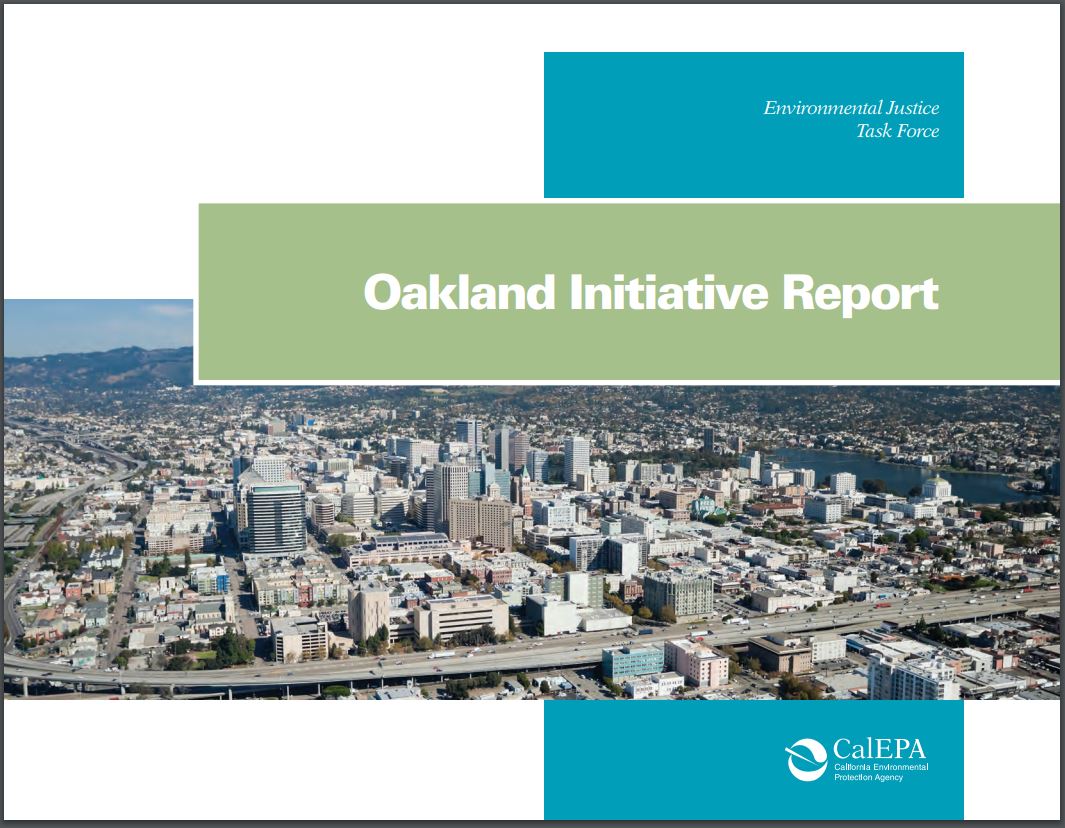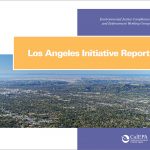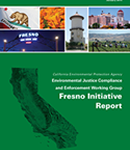The Environmental Justice Task Force coordinates the compliance and enforcement work of CalEPA’s boards, departments and office in areas of California that are burdened by multiple sources of pollution and are disproportionately vulnerable to its effects. The Task Force’s mission is to facilitate the use of environmental justice considerations in compliance and enforcement programs and enhance communications with community members to maximize benefits in disproportionately impacted areas.
Enhanced, Sustained Community Engagement
The work of the Environmental Justice Task Force is centered around enhanced, sustained community engagement. Through conversations with environmental justice stakeholders across the state in 2021 and 2022, CalEPA received consistent feedback regarding the need for enforcement engagement that is more transparent, solution-oriented, responsive to community needs, and sustained. To begin meeting these needs, the Environmental Justice Task Force is focused on enhanced engagement with existing, community-led forums that focus on environmental violations. Beginning in five pilot communities, the Task Force is staffing these forums with individuals charged with following up on all community complaints, working across media (e.g., air, soil, water) and levels of government to seek solutions, and regularly communicating with the forum’s participants regarding their progress and any challenges. This new approach will help to break down governmental silos and enable speedy mobilization of multi-agency resources to address community concerns.
The Environmental Justice Task Force’s work will support implementation of the CalEPA-USEPA Region 9 Memorandum of Understanding (MOU) on Collaborative Efforts on Enforcement and Compliance Assurance in Overburdened Communities. USEPA intends to enhance its enforcement engagement with the same pilot communities, creating an opportunity for consistent and sustained state-federal collaboration focused on solving the problems that are most pressing for overburdened communities.
Transparent communication with residents in overburdened communities is at the heart of the Environmental Justice Task Force’s work. There are times, however, when enforcement information must be kept confidential to protect the integrity of an investigation or for other reasons. To clarify the appropriateness of sharing enforcement information, CalEPA created a guidance document for enforcement staff. The guidance is designed to encourage appropriate sharing of enforcement information to increase transparency and build trust with community partners.
History of the Environmental Justice Task Force
The Environmental Justice Task Force’s work has evolved substantially since its inception in 2013. From 2013-2019, the Environmental Justice Task Force utilized a geographic-based approach. After identifying a target area based on CalEnviroScreen and other factors, a multi-media team of agency representatives would meet with community members to better understand local concerns. The agencies would follow up with compliance assistance for regulated businesses and coordinated, multi-agency enforcement sweeps to address environmental concerns. Reports describing these geographic-based initiatives are available at the bottom of this page.
In 2019, CalEPA identified a need to improve compliance and enforcement in particular sectors with known impacts to overburdened communities and the Environmental Justice Task Force pivoted to meet this need. Multi-agency compliance and enforcement initiatives were established in four focal sectors: compost, agricultural work protection standards, oil and gas, and metal shredders. The workplans for these sector-based initiatives were completed in 2021 and 2022 and a summary of the initiatives is included in CalEPA’s 2021 Enforcement Report. CalEPA’s boards and departments have now assumed leadership roles in these sectors, creating an opportunity for the Environmental Justice Task Force to re-center its efforts around enhanced, sustained community engagement.
 Initiative: Stockton
Initiative: Stockton
In 2019, the Task Force completed an environmental justice initiative in historically segregated neighborhoods in the city of Stockton. The multi-agency task force conducted more than 200 inspections, and took steps to address illegal dumping, air pollution near schools, drinking water issues and industrial pollution. Learn about the results in the Stockton Initiative StoryMap.
 Initiative: Imperial County
Initiative: Imperial County
In 2018, the Task Force completed its first environmental justice initiative in a rural setting and the first with county-wide emphasis. The initiative addressed farmworker protections, cross-border pollution and illegal off-road vehicle activity. CalEnviroScreen 3.0 indicates that much of the county’s census tracts fall within the top 80th to 95th percentile of census tracts in California for pesticide applications, homes near solid waste facilities and homes near businesses that generate hazardous waste. Nearly 30 percent of 261 inspections resulted in findings of noncompliance or violations. See the Imperial County Initiative Report.
 Initiative: Pomona
Initiative: Pomona
In 2017-2018, the Task Force conducted an initiative focused on the industrial corridor of southeast Pomona and surrounding residential neighborhoods. CalEnviroScreen estimates the total pollution burden of this area is at the 92nd percentile, meaning only 8 percent of areas in California have a higher cumulative pollution burden. For an overview of this initiative, please see the Pomona Initiative Report (PDF, 2.3 MB). For photos and videos, with text, see the Pomona Initiative Story Map.
 Initiative: Oakland
Initiative: Oakland
In 2016-2017, the Task Force conducted an initiative focused on the communities of East and West Oakland. Both communities are overburdened by multiple sources of pollution and high rates of childhood asthma, according to CalEnviroScreen. For an overview of this initiative, please see the Oakland Initiative Report (PDF, 4MB).
 Initiative: Los Angeles
Initiative: Los Angeles
In 2015-2016, the Task Force conducted an initiative focused on the Los Angeles communities of Boyle Heights and Pacoima. Both communities are among the top 5 percent of disadvantaged communities in California, according to CalEnviroScreen. For an overview of this initiative, please see the Los Angeles Initiative Report (PDF, 6MB).
 Initiative: Fresno
Initiative: Fresno
In 2013-2014, the Task Force selected a portion of the city of Fresno and its surrounding unincorporated area for its first initiative, with the goal of increasing compliance with environmental laws in this area. For an overview of this pilot initiative, see the Fresno Initiative Report (PDF, 12MB).

